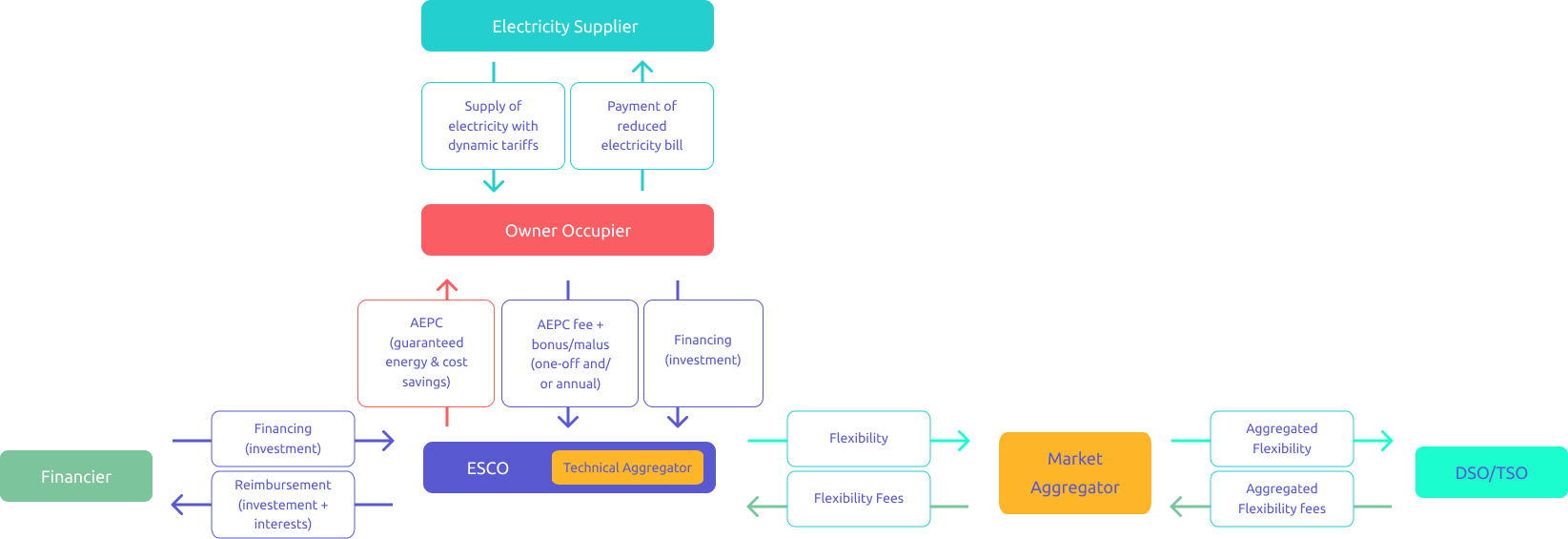Variation B.3
The Energy Services Company (ESCO) integrating the Demand Response (DR) into what becomes a true Active Building Energy Performance Contracting (AEPC) service, adds value to all stakeholders. However, the simple pooling or bundling of flexibility does not allow for the optimization of the flexibility across the ESCO’s portfolio of multiple customers and multiple buildings. By developing and offering solutions that (technically) aggregate the flexibility and align the full capacity, he can optimise the Demand Response towards the flex requesters (Distribution System Operator (DSO)/Transport System Operator (TSO) and potentially Balance Responsible Party (BRP)). This role of technical aggregator is an interesting add-on to the Business Model.
Technically, the ESCO has the control of the Building Energy Management System (BEMS) and the software to do the active control at the request of the flex requesters, via the Market aggregator. This variation of the model is likely to increase collaboration in the market between existing aggregators and ESCOs in a common approach to AEPC. This increased attractiveness of the flexibility to those who request it, may also improve the interest for the customer as the flex requester is likely to pay a better price for it. It also increases the likelihood to reach a minimum critical level to get the DSO/TSO’s interested in the first place.
